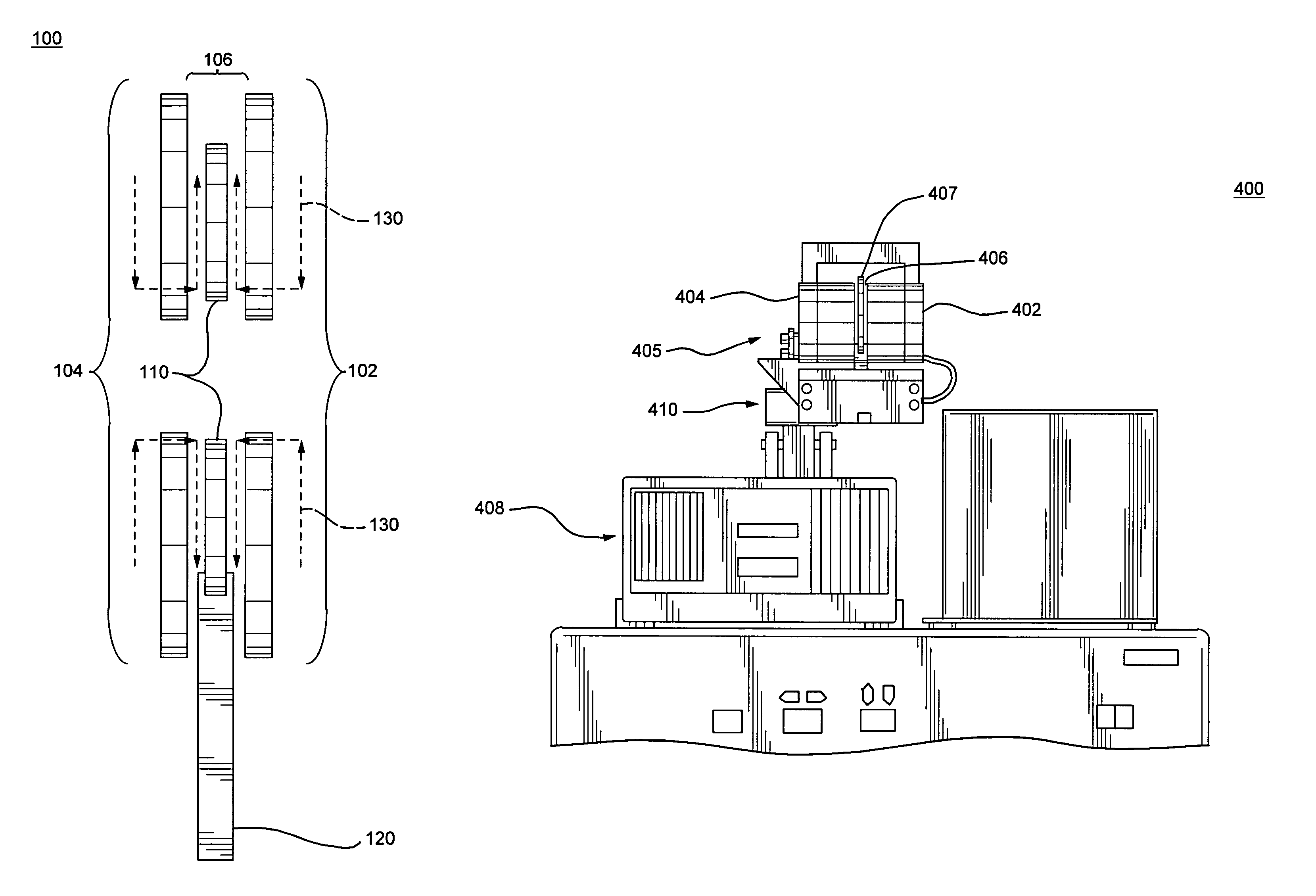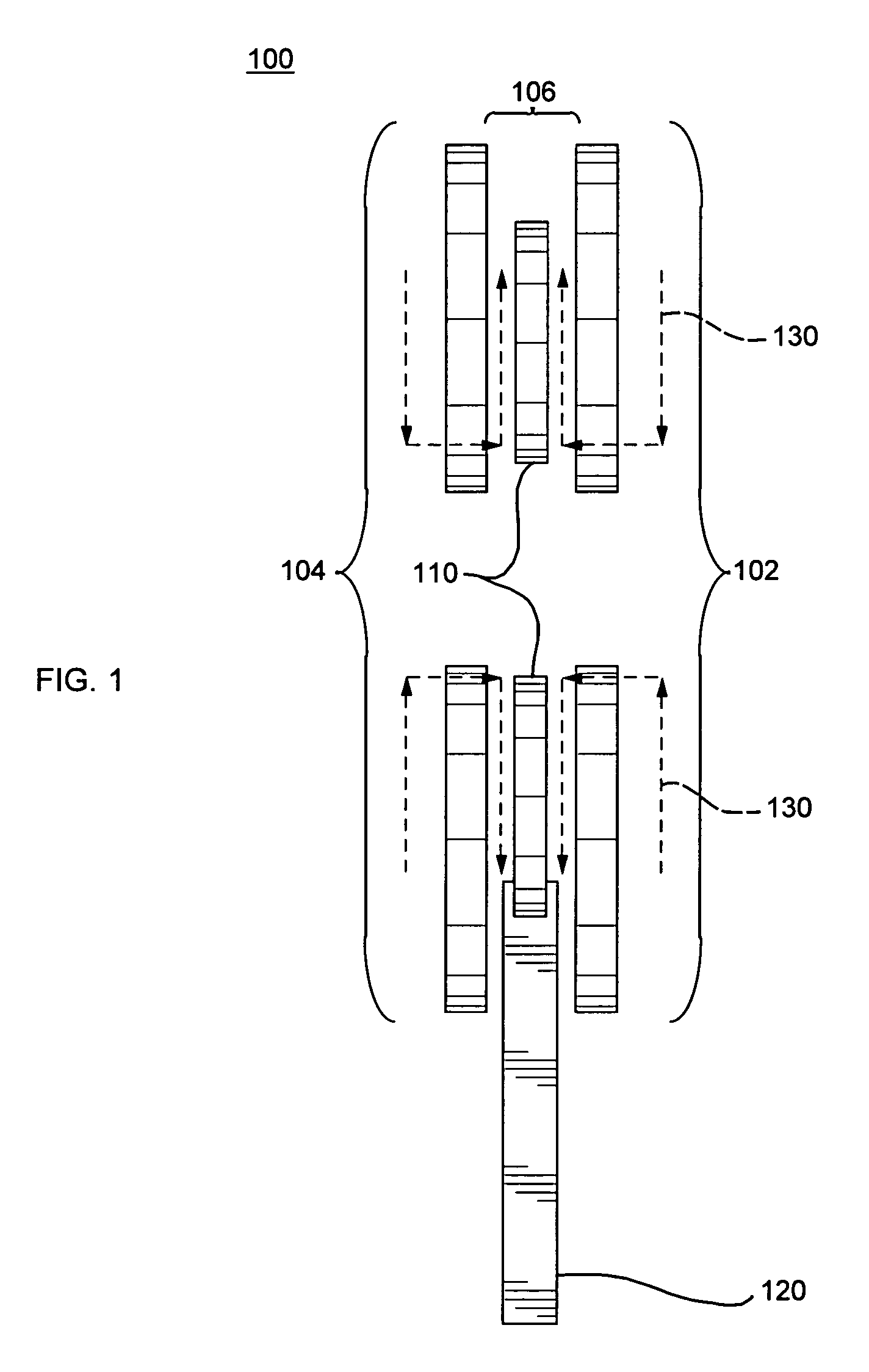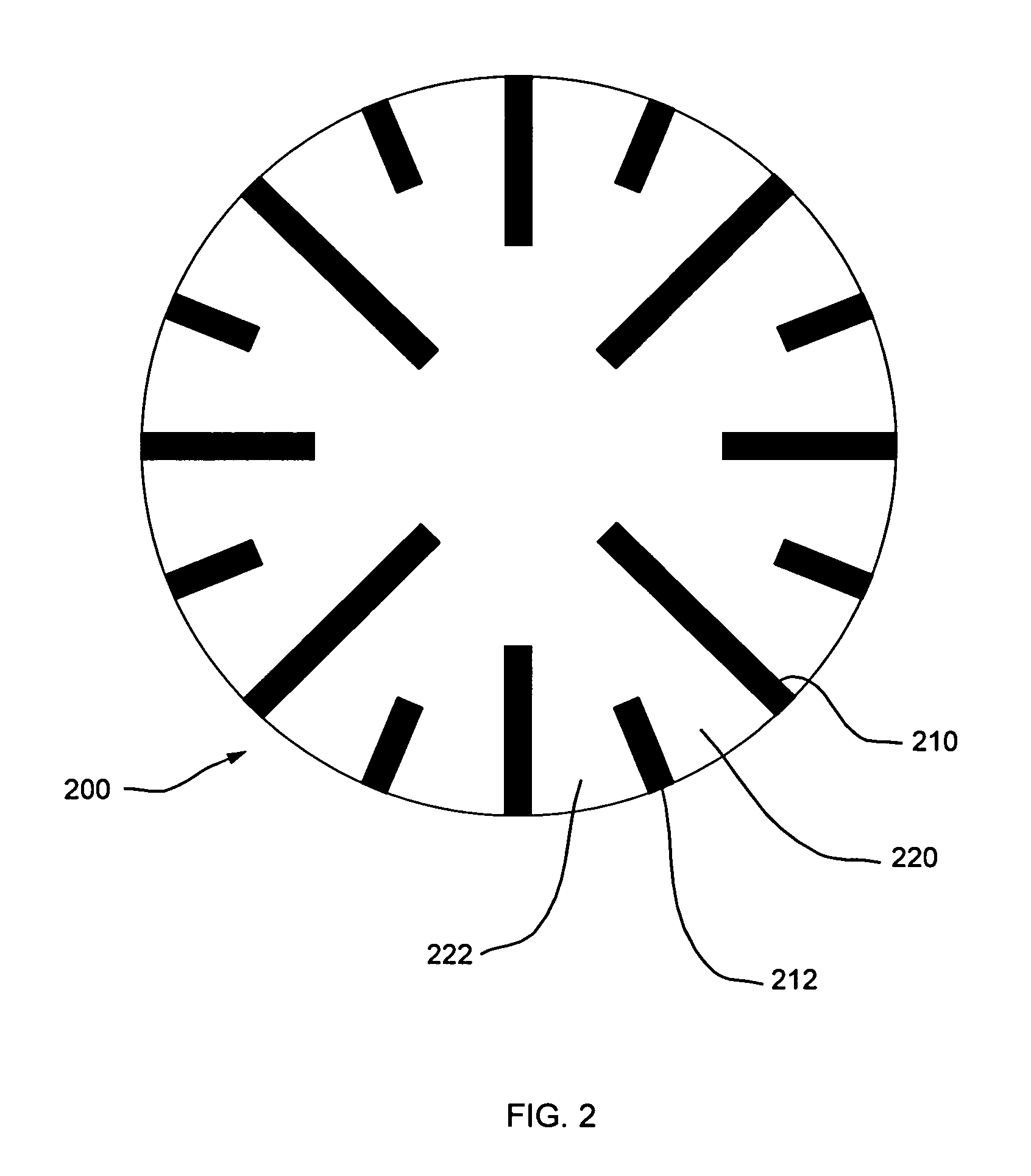Disk preconditioning apparatus and related method
- Summary
- Abstract
- Description
- Claims
- Application Information
AI Technical Summary
Benefits of technology
Problems solved by technology
Method used
Image
Examples
Embodiment Construction
[0031]FIG. 1 is a schematic illustration of a portion the disk preconditioning system 100 of the present invention. The system 100 includes two pancake coils 102 and 104, which are substantially identical in size, but opposed in winding orientation, and which are disposed generally parallel to one another with a gap 106 being defined therebetween. A disk 110 is fixed to a suitable robot arm 120 which moves the disk 110 into the gap 106 between the coils for preconditioning.
[0032]Illustratively, the pancake coils 102 and 104 may have an outer diameter of approximately 4.3 inches or such other dimension as required so that the diameter of the coils exceeds the outer diameter of the disk 110 by at least three times the size of the gap 106. The gap is about 0.25 inches wide in accordance with an illustrative embodiment of the invention. This results in a field of about 85% of the field strength at the inner portion of the disk.
[0033]When a high current pulse is driven to the coils using...
PUM
 Login to View More
Login to View More Abstract
Description
Claims
Application Information
 Login to View More
Login to View More - R&D
- Intellectual Property
- Life Sciences
- Materials
- Tech Scout
- Unparalleled Data Quality
- Higher Quality Content
- 60% Fewer Hallucinations
Browse by: Latest US Patents, China's latest patents, Technical Efficacy Thesaurus, Application Domain, Technology Topic, Popular Technical Reports.
© 2025 PatSnap. All rights reserved.Legal|Privacy policy|Modern Slavery Act Transparency Statement|Sitemap|About US| Contact US: help@patsnap.com



